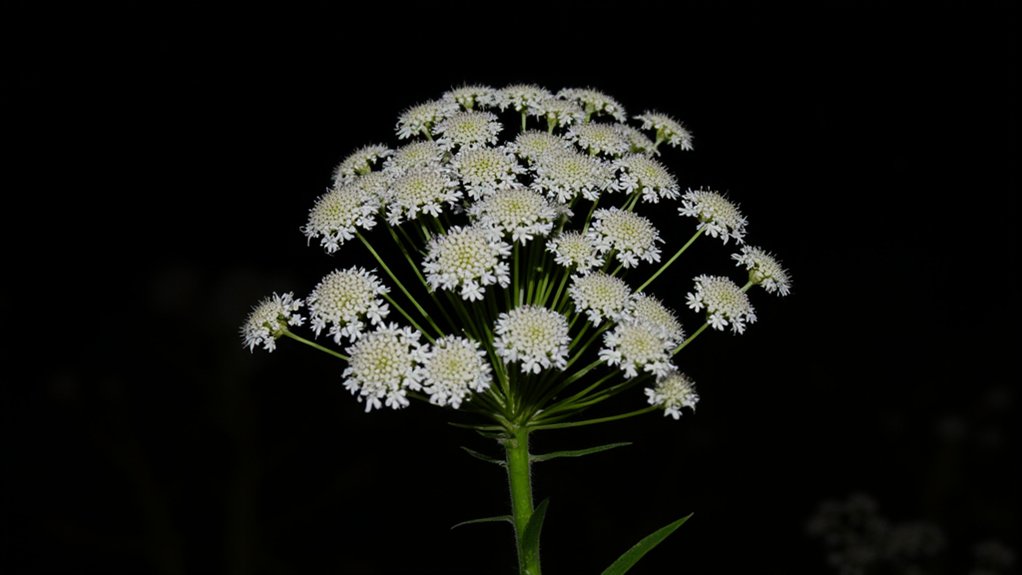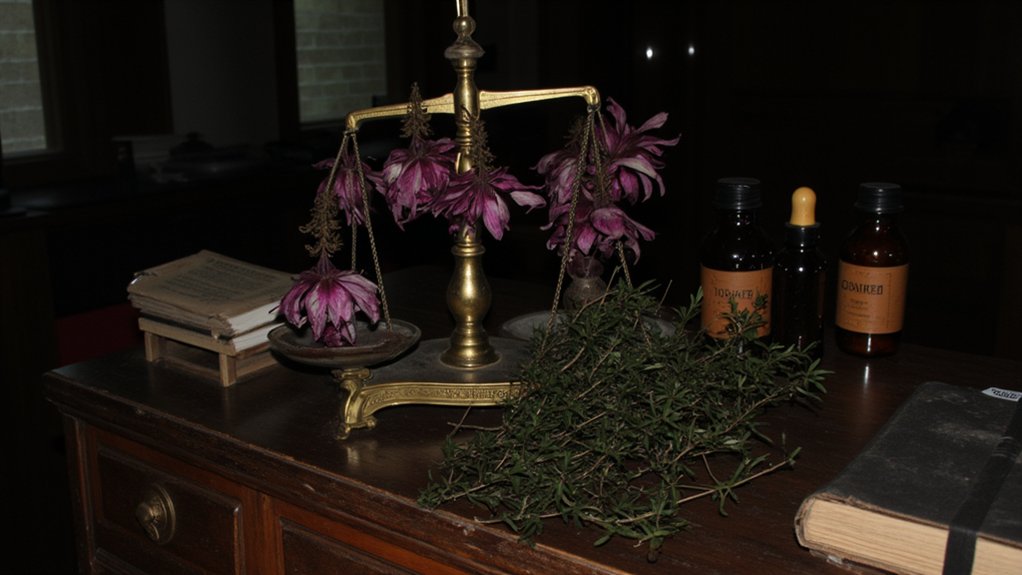You’ll find that nature’s deadliest plants have shaped human history far more than you might expect. From Cleopatra’s experiments with deadly nightshade to the Borgia family’s infamous poison gardens in the 15th century, toxic flora has served as both weapon and tool across civilizations. While today’s pharmaceutical companies transform these lethal specimens into life-saving medicines, there’s still much to uncover about how these botanical killers changed the course of empires.
Contents
- 1 Ancient Assassins: Famous Deaths by Botanical Poisons
- 2 Deadly Gardens: Noble Plots and Political Intrigue
- 3 Dark Medicine: When Healing Plants Turn Lethal
- 4 Forbidden Love: Plant Poisons in Romance and Tragedy
- 5 Warfare’s Secret Weapon: Toxic Plants in Battle
- 6 Modern Legacy: Historical Plant Poisons in Today’s World
Ancient Assassins: Famous Deaths by Botanical Poisons

Throughout history, deadly plants have served as subtle weapons of choice for assassins seeking to eliminate their targets without detection. You’ll find hemlock at the center of ancient Greece’s most famous execution, when philosopher Socrates was forced to drink the poisonous brew in 399 BCE.
In ancient Rome, Emperor Claudius met his fate in 54 CE when his wife Agrippina allegedly used death cap mushrooms in his meal. Another notorious case occurred in 1212, when Emperor Guangzong of China died after consuming aconite-laced dumplings prepared by palace conspirators.
These botanical assassinations weren’t always successful – you’d be surprised how many targets survived by induced vomiting or quick medical intervention.
Deadly Gardens: Noble Plots and Political Intrigue

While royal gardens were known for their beauty and splendor, they also served as deadly laboratories for medieval nobles’ political schemes. You’d find nightshade, hemlock, and monkshood growing discreetly among the roses and herbs in these palatial grounds.
During the 15th and 16th centuries, noble families like Italy’s Borgias and France’s Medici cultivated extensive poison gardens. They’d employ specialized gardeners, known as “venenarii,” who could distinguish between lethal and medicinal varieties of each plant.
These botanical collections weren’t just for show – they provided ready access to untraceable poisons, making them essential tools in Renaissance power struggles.
Dark Medicine: When Healing Plants Turn Lethal

Many plants that filled medieval poison gardens also served legitimate medical purposes, highlighting nature’s double-edged potential. You’ll find that deadly nightshade, once used to dilate women’s pupils for beauty purposes, could either treat muscle spasms or cause fatal respiratory failure, depending on the dose.
Monks and healers understood this delicate balance, carefully measuring herbs like foxglove, which contains digitalis for heart conditions. Even today’s pharmaceutical companies extract beneficial compounds from these toxic plants. You’re fundamentally working with the same materials as medieval herbalists when you take digoxin, a modern heart medication derived from foxglove.
Forbidden Love: Plant Poisons in Romance and Tragedy
Since ancient times, love-struck individuals have turned to toxic plants for their most desperate romantic gestures. You’ll find these deadly botanicals woven throughout literature’s greatest tragedies, from Shakespeare’s Romeo and Juliet to ancient Greek myths.
The oleander plant, with its delicate pink blooms, features prominently in Mediterranean tales of star-crossed lovers. You’d discover that just one leaf contains enough cardiac glycosides to stop a heart. Similarly, deadly nightshade played a role in medieval romance, where women used its juice to dilate their pupils, creating an appearance of arousal and desire.
These botanical poisons didn’t discriminate between unrequited love and mutual attraction.
Warfare’s Secret Weapon: Toxic Plants in Battle
The romantic tragedies of toxic plants take on a darker purpose when you examine their role in warfare throughout history. You’ll find ancient Greek armies contaminating water supplies with hellebore, while Scythian archers tipped their arrows with deadly monkshood.
During the First World War, soldiers extracted atropine from deadly nightshade to create nerve agents. What’s particularly fascinating is how Native American tribes used pokeweed’s purple juice to send secret messages, as the toxin becomes visible only when heated.
Even today, you can trace ricin’s military applications back to World War II, when it was code-named “Compound W.”
Modern Legacy: Historical Plant Poisons in Today’s World
While historical plant poisons once served as weapons of war, you’ll now find their derivatives in modern medicine and research labs across the globe. Plants like digitalis, from the deadly foxglove, help treat heart conditions, while yew tree compounds fight cancer through chemotherapy treatments.
You’ll discover that deadly nightshade’s atropine is essential in eye examinations and surgical procedures, dilating pupils and controlling muscle spasms. Even the notorious wolfsbane, historically used to poison arrow tips, provides valuable compounds for studying cellular processes and developing new pharmaceuticals.
These ancient killers now save countless lives through carefully controlled, laboratory-refined applications.
